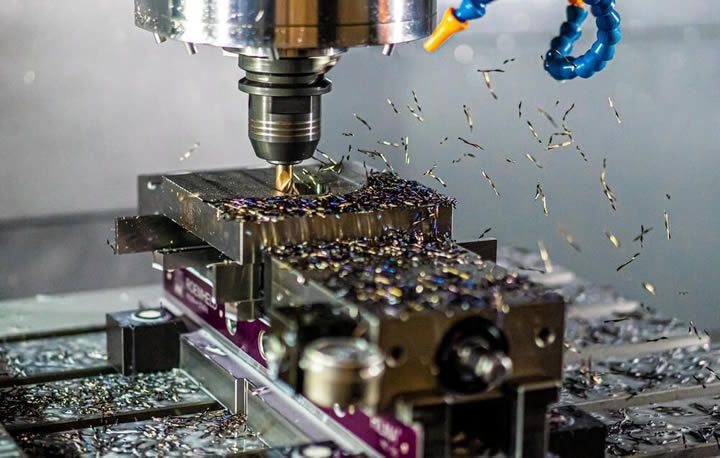Which CNC Machining Cooling Method Should You Pick?

Computer numerical control (CNC) machining can refer to any computer automated control of tools, including spark cutting, water jet cutting or plasma cutting. Milling remains the most commonly found CNC process used in industry due to its relative ease of operation, mechanical simplicity and low cost. However, several mechanical, electrical and material related failure modes cause CNC milling to lose its competitive advantage over other machining techniques. Notably, overheating of the rotary cutters or milled materials can permanently damage the milling device as well as cause bodily harm to the machine operators. To limit the chances of mill overheating in CNC processes, different manufacturing techniques have been developed to control the heat produced all while limiting costs. This article will present the most important developments in overheating mitigation for CNC milling.
Flood cooling
Flood cooling, also known as wet cooling, is probably the most commonly used cooling technique that involves spraying a constant jet of coolant onto the contact area between the tool and the milled material. It is a very safe way of mitigating heat while being extremely effective. The jet of coolant also has the benefit of washing away chips of material produced during the milling process from the contact area. Downsides include the high costs of cooling fluid and how it spreads in and around the machine, requiring more cleanup. Further, synthetic cooling fluid is often toxic and can create particles harmful to the environment and human health.
Solid lubrication
Strong metalworking liquids, or industrial ointments, can be used as a substitute for less viscous liquids. Water and soil can be contaminated using mineral-based cooling liquids used in flood cooling. Because less fluid is required than with flood cooling, solid lubrication is more environmentally-friendly and often more cost-friendly. Unfortunately, lubricant delivery is less efficient than a constant spray system and less frictionless, requiring a regular application to the contact area. Also, solid lubrication is not good for applications needing rapid clearing of material chips.
Minimum quantity lubrication (MQL)
MQL is a technique that tries to use the least possible amount of cutting liquid for machining. Because flood cooling uses large quantities of coolant, increasing costs and environmental impact of the machining process, MQL seeks to reduce these factors by basing the coolant requirements on the specific needs of a process. For this reason, MQL processes must be engineered with greater precision, as a calculation mistake could mean dire consequences for the machine or its operators.
Compressed air
Minimal use of lubrication through MQL or solid lubrication significantly reduce the quantities of cooling agent needed. Compressed air is a solution that can eliminate any need for lubricant, thus dealing with disposal and variable cost issues. Using compressed air may very well be the most cost-efficient way of cooling a CNC machining process and rapidly clears chips. Regretfully, the fact that compressed air cooling has no lubricating quality makes it difficultly applicable to friction-intense processes.
Cryogenic cooling
Liquid nitrogen can be injected into the tool to keep the milling surface cool throughout the process. Evidence has shown that this method produces an evener finished surface than flood cooling and that the injected tools have a longer life-cycle than their more ordinary counterparts. Considering it has relatively low variable costs since no large quantity of flood coolant is used, it is a viable option for applications in which the application of exterior coolants is not possible.
Which method is best?
No method is unilaterally better than all the others. Each method has pros and cons that can add value to a process depending on the specific context in which CNC milling is required. It is important to remember that choosing the right method to avoid overheating must be done first and foremost in regards to the safety of the operators. Many jurisdictions have regulations for machining processes, undoubtedly influencing the choice of a cooling process.
Comments (0)
This post does not have any comments. Be the first to leave a comment below.
Featured Product

